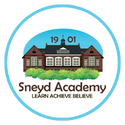Reception Mathematics
Curriculum Overview
Developing a strong grounding in number in Reception is essential so that all children develop the necessary building blocks to excel mathematically. In Reception we lay the foundations for children to develop their calculation skills in addition, subtraction, multiplication and division. This means they then have the skills that they need to access their maths learning when they move into Year 1 and start the National Curriculum. By the end of Reception, children should be able to count confidently beyond 20 and develop a deep understanding of the numbers to 10. They are also expected to understand the relationships between numbers to 10 and the patterns within those numbers. We use a range of teaching resources to support children with their learning, including White Rose, Numberblocks and Master the Curriculum. There are also a number of practical resources which children use to help them understand numbers and the number system. (See Resources Link for examples.)
Learning in Reception is linked to children’s interests, where possible, to ensure that they are engaged, challenged and are enjoying their learning in a mathematically rich environment. In addition to exploring number, the curriculum includes opportunities for children to develop their spatial reasoning skills through learning about pattern, sequencing, shape, space and measures. They are encouraged to look for patterns and relationships and spot mathematical connections.
We encourage children to ‘have a go’ and talk to adults and to each other about what they notice. We nurture confidence and embrace mistakes so children see them as being part of the process of understanding and improving. Maths in Reception should be fun, engaging and a positive experience for all children.
By the end of Reception, we expect that the children can:
Have a deep understanding of number to 10, including the composition of each number.
Subitise (recognise quantities without counting) up to 5.
Automatically recall (without reference to rhymes, counting or other aids) number bonds up to 5 (including subtraction facts) and some number bonds to 10, including double facts
Verbally count beyond 20, recognising the pattern of the counting system.
Compare quantities up to 10 in different contexts, recognising when one quantity is greater than, less than or the same as the other quantity.
Explore and represent patterns within numbers up to 10, including evens and odds, double facts and how quantities can be distributed equally.
Examples of ‘Continuous Provision’ Maths Activities are shown below.

